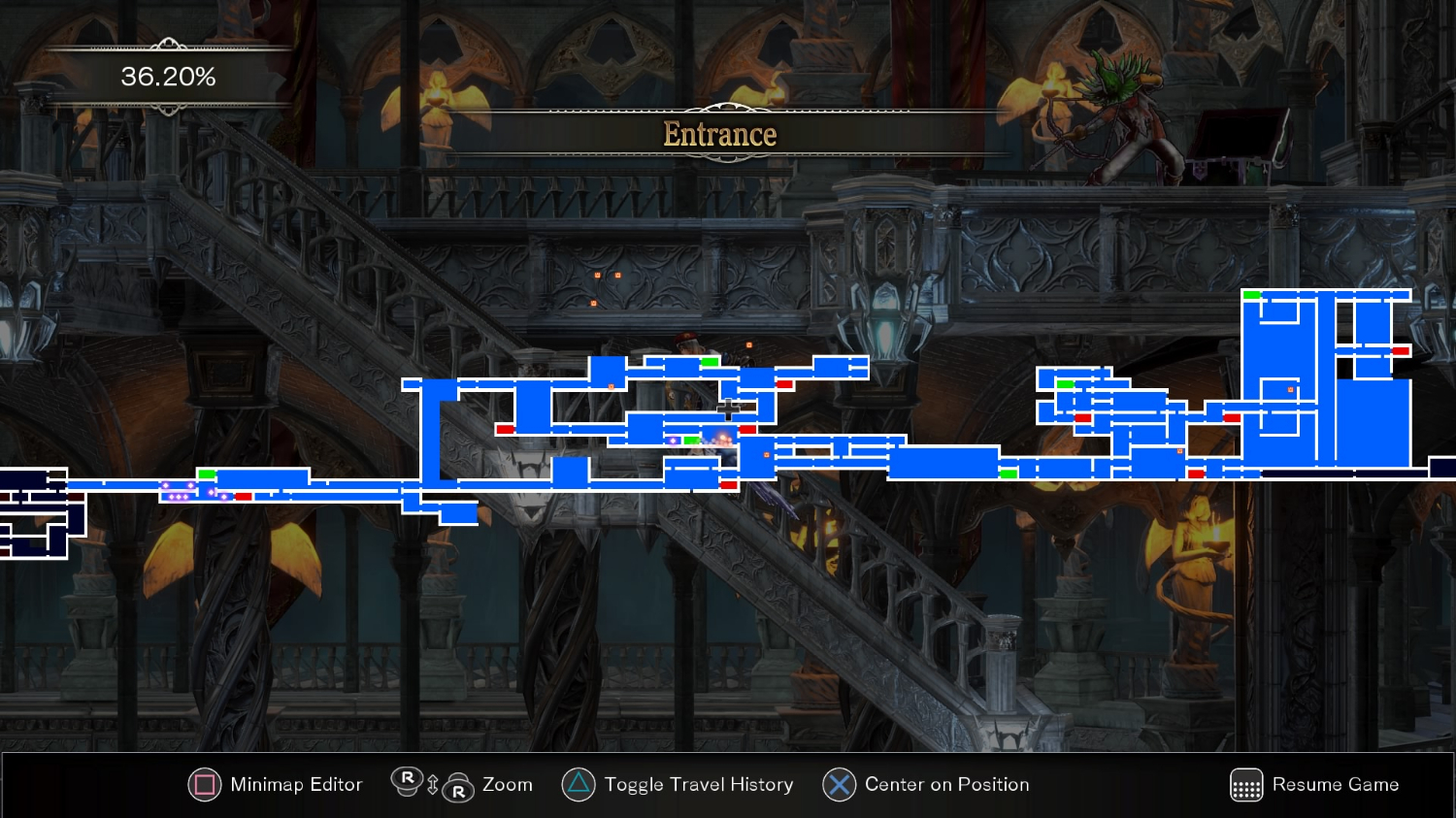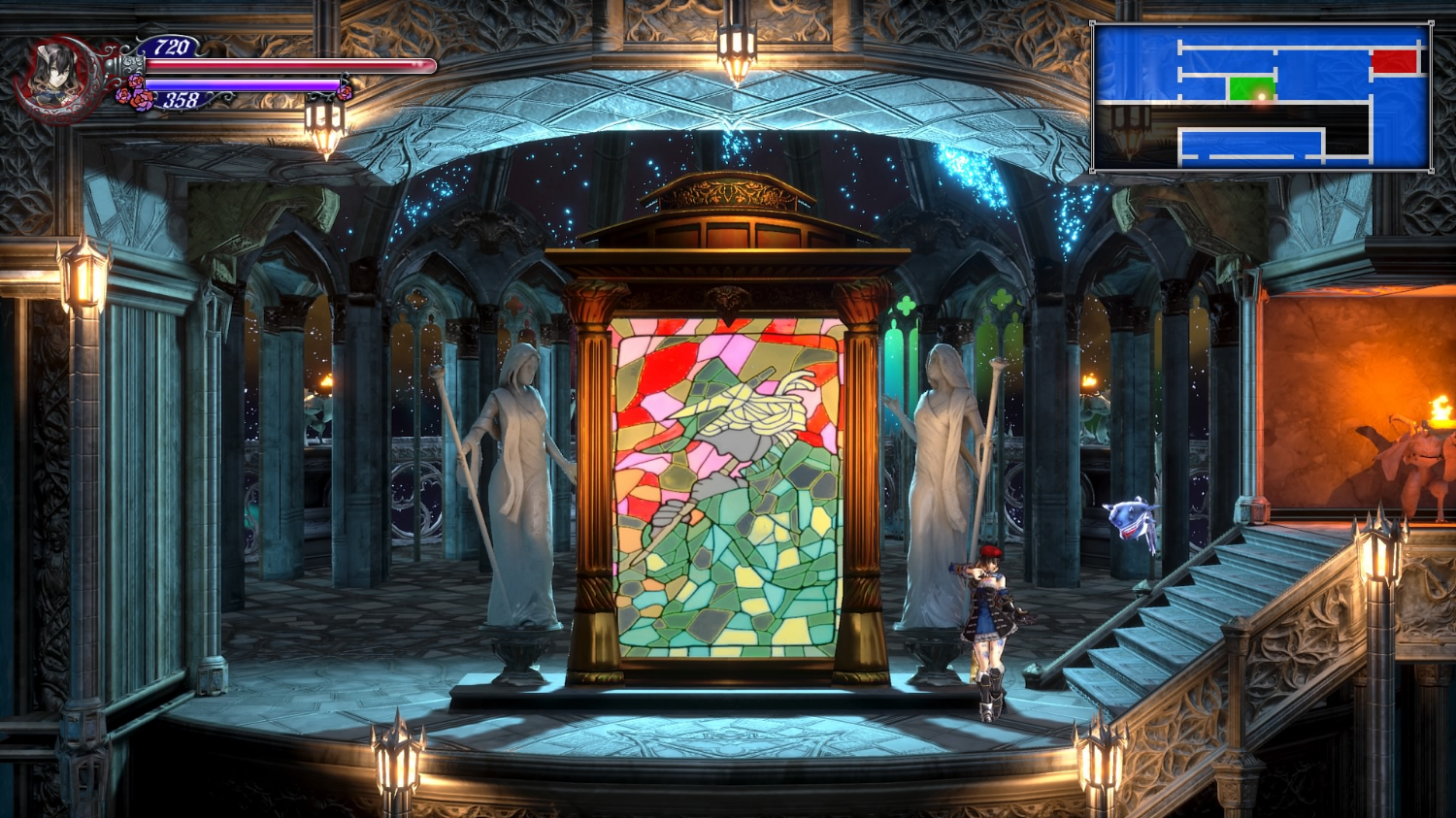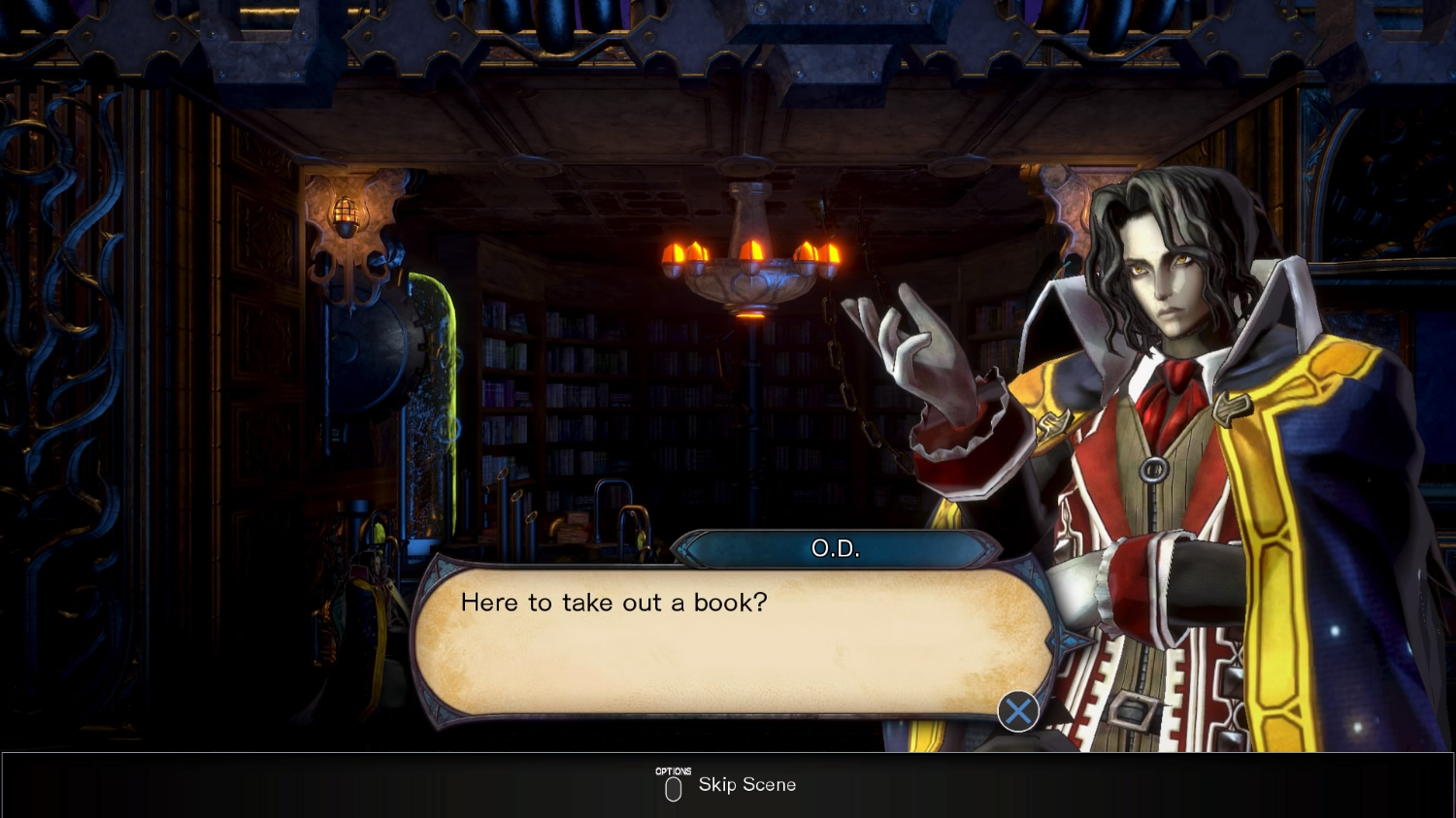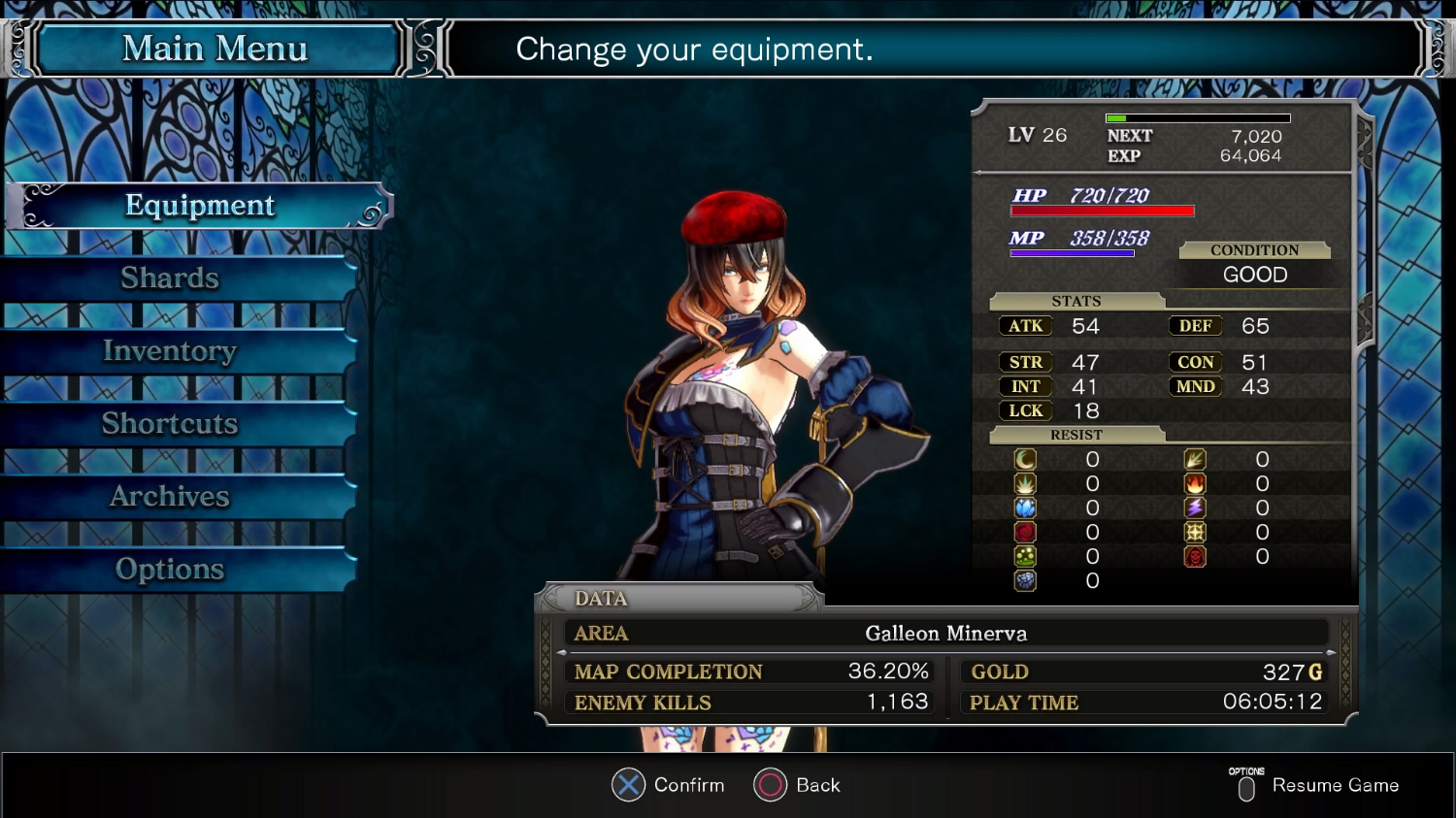10 Essential Tips for Bloodstained: Ritual of the Night
While Bloodstained: Ritual of the Night isn't obscenely difficult, it doesn't hold your hand, either. These tips can help you triumph.
After four long years, Bloodstained: Ritual of the Night is finally here to deliver your Victorian-Gothic horror/platformer fix. Fans who grew up on Castlevania: Symphony of the Night and similar titles should feel right at home, but the game's old-school design sensibilities might vex fans who are jumping in for the first time. While Bloodstained isn't obscenely difficult, it doesn't hold your hand, either, and it's entirely possible to get stuck while exploring the game's myriad haunted castles, eerie gardens, ghostly trains and clockwork towers. If you're having trouble figuring out where to go, what to do or how to survive against the demonic hordes, these 10 tips should give you a fighting chance.
Try out different weapons

Miriam isn't just a gifted mage; she's also a natural fighter. Any weapon you find, you can equip right away. There are a plethora of different weapons to try, from knives and swords, to maces and whips, to guns and battle-axes. Each weapon has a different damage output, reach and speed. Whether you want to get up close and personal with a dagger, or keep your distance with a pistol, or slice enemies above you with a greatsword, you'll get a chance to try out your strategy. You can also perfect your mastery over a single weapon, or equip a different one for specific enemy types; it's up to you, especially since you can swap out weapons anytime, including in the heat of battle.
Explore every area

This one goes without saying for genre veterans, but neophytes take note: Don't make a beeline for the next area. Bloodstained is a Metroidvania, which means that free-form exploration is (at least) half of the fun. Filling in the map isn't just satisfying; it's also a great way to find new items, discover hidden upgrades and fight enough enemies to level up. The map is replete with save points, teleportation rooms and shortcuts to previous areas, and there's no way to find them unless you scour every nook and cranny. Your time will never be wasted, since enemies respawn each time you reenter a room, and more XP and items are always helpful. You should especially explore if you haven't seen a save point in a while; the game is fairly generous with them.
Hunt for breakable walls

If you come across a dead end, there's usually (but not always) something else to find. Many rooms in Bloodstained have valuable items hidden behind breakable walls. However, breakable walls look identical to their sturdier counterparts. As such, the only way to tell them apart is to strike the wall a few times with any weapon you have equipped. If it starts to crack, strike it a few more times, and you'll find a helpful hidden item in the rubble. Since it takes only a few seconds to strike a wall, it's worth hitting just about every one you come across, as you never know which one might be hiding a secret.
Get instant access to breaking news, the hottest reviews, great deals and helpful tips.
Revisit your home base

Early on in the game, you'll discover the English village of Arantville, where all of your helpful NPC friends will set up shop. Johannes can craft weapons and Dominique can sell you goods, while villagers like Susie and Lindsay will send you on lucrative quests to slay demons and hunt down rare items. But revisiting the home base isn't just about gameplay mechanics; characters will also impart vital story information. Speaking with Dominique and Zangetsu will reveal a little bit about the history of the Church and the Alchemists, while talking with Johannes will flesh out important characters like Richard and Gebel. Conversations change often, so check back frequently.
Learn enemy patterns

Bloodstained isn't the most punishing game out there, but it's not the most forgiving title, either. When enemies hit you, you don't get a few seconds of "mercy" invincibility, as in a lot of other games. That means that if an enemy hits you once, it'll probably do so again — and again and again, if you let it. Since you never know where the next health-restoring save point might be, it's best if you don't let enemies hit you too often. As such, it's worth taking a little time to suss out how each new enemy moves, and the best way to destroy it without sustaining damage yourself. This is especially important during boss fights, since they can dish out massive amounts of damage in a short period of time, and even healing potions can't fully mitigate that.
Pay attention to doors

While you'll never know what's around the next corner in Bloodstained until you explore the area for yourself, certain doors can give you a hint. Generally speaking, there are two kinds of doors in the game: silver ones with red outlines and black ones with yellow-orange flame patterns. The former are perfectly safe; they simply signify that a new area lies beyond. The latter, though, usually indicate that a boss fight is about to happen. If that's the case, you'll want to go back and save, check your equipment, level up or do anything else you need to before taking on Bloodstained's biggest, baddest enemies. Certain doors also require keys, but they'll let you know right up front.
Take note of inaccessible areas

Do you see a locked door? A platform that's too high to reach? A narrow gap that no human could pass? Don't despair. The areas aren't locked off forever; you just don't have the right tools to access them now. That much may be fairly obvious — but trust me, by the time you're ready to come back, you'll have forgotten where it is. Go to the map screen and add a marker (circle on a PS4 controller; B on an Xbox controller). That way, when you get a new ability, you can simply refer to your map and figure out where you need to go next, rather than embarking on a futile quest to find that one room you saw that one time, somewhere in the enormous world.
Talk with friendly characters (again)

As Bloodstained is a Metroidvania, it wouldn't be much fun if it simply told you where to go next. That's liberating, because it means that you'll progress through the game entirely under your own power. But it's also frustrating, because it means that if you get stuck, you might have to revisit every single room on the map before you find a way forward. But then again, you might not. After major boss fights, helpful NPCs will often have information on how to reach the next area. They'll rarely come right out and tell you exactly where to go, but they'll tell you about items you might need, or obstacles you can now traverse. OD, the vampire who lives in the library, and Dominique, the Church agent in Arantville, are good sources of information.
Don't fight bosses right away

When you see one of those tempting red-orange doors, you may want to barrel in and take down the next boss straightaway. After all, bosses usually guard essential upgrades and always give massive amounts of XP. However, bosses are also incredibly tough and can usually demolish you in less than a minute if you're not careful. Making a beeline for the boss of a level won't give you all the items and experience you need to defeat it — but exploring a level thoroughly will. When you find a boss door, hunt around nearby for a save room. Then, make sure you've explored every possible room in the area. If you're almost at the XP threshold for a new level, fight a few more enemies and level up first. Then, show the boss what Miriam's made of.
When all else fails, level up

Level grinding has been a favorite tactic of RPG players since time immemorial. The logic is both simple and sound: If you're having a lot of trouble with a particular boss, you can simply level up until the boss isn't quite so difficult anymore. This tactic has its drawbacks — it's time-consuming, and if you do it to excess, it robs the game of a lot of its challenge. But it beats being stuck on the same section, unable to progress. The best way to level up in Bloodstained is to find a room full of XP-rich foes, defeat them all, exit and immediately reenter. If said room is near a save point, so much the better. That way, you'll be able to recharge your health periodically.
Credit: Tom's Guide

Marshall Honorof was a senior editor for Tom's Guide, overseeing the site's coverage of gaming hardware and software. He comes from a science writing background, having studied paleomammalogy, biological anthropology, and the history of science and technology. After hours, you can find him practicing taekwondo or doing deep dives on classic sci-fi.
